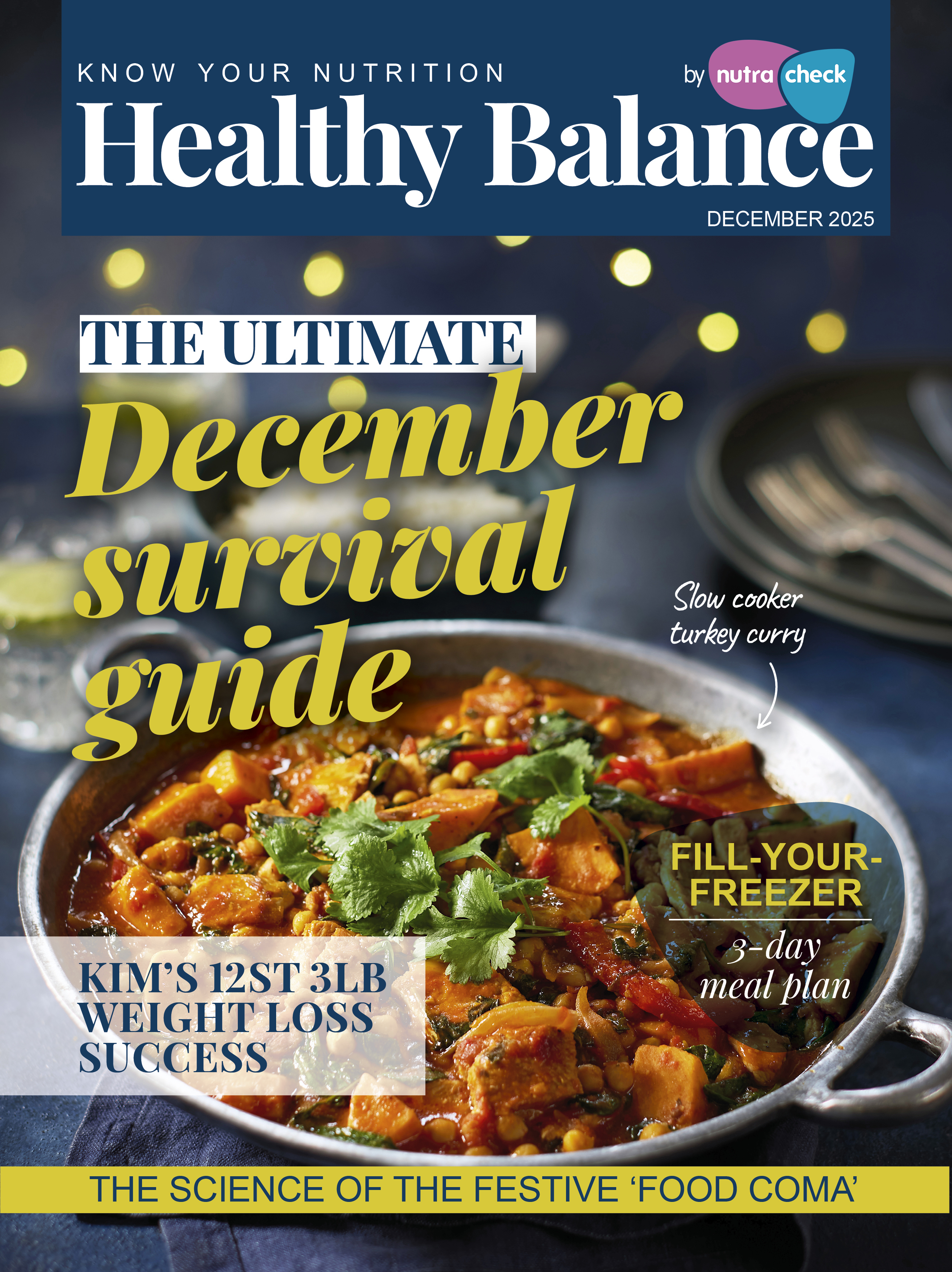5 ways to stay fuller for longer
Beth Furness - Nutritionist
Ever find yourself hungry soon after eating? Feeling full and satisfied isn’t just about how much you eat – it’s about what you eat. Choosing the right foods in the right combinations can help keep hunger at bay, steady your energy levels, and make it easier to stick to your daily calorie target.
If you're tracking your food with Nutracheck, you’ve probably noticed that some meals keep you full for hours, while others leave you reaching for a snack soon after. By focusing on the right balance of protein, fibre, and healthy fats, you can avoid the energy crashes that lead to cravings and unexpected hunger later on.
Here are five simple ways to help you stay fuller for longer – without increasing your calorie intake.

1Pair carbs with protein, fibre, and healthy fats
Your body breaks down simple carbs quickly when eaten on their own, which can lead to energy crashes and hunger soon after. But pairing them with protein, fibre, or healthy fats helps slow digestion, keeping you fuller for longer.
Try this:
- Swap jam on toasted white bread for peanut butter or scrambled eggs on wholegrain bread.
- Pair fresh fruit with Greek yoghurt or a handful of nuts.
- Add lean protein, avocado or olive oil to wholegrain pasta or salad.
Balancing your plate this way helps prevent blood sugar spikes and crashes, making it easier to stick to your calorie target without feeling hungry again soon after eating. Just remember to track all your additions in the app, as higher fat foods can easily add calories if you don’t portion them out accurately.

2Prioritise high-fibre foods
Fibre is a game-changer when it comes to satiety. It slows digestion, keeps your gut happy, and helps regulate appetite. Despite its benefits, many of us don’t get enough fibre – but small changes can make a big difference.
Try this:
- Choose wholegrain versions of bread, pasta, and rice instead of refined white versions.
- Load up on fibre-rich veggies like broccoli, carrots, and peppers.
- Add beans, lentils, or chickpeas to meals for an extra fibre boost.
Many fibre-rich foods add bulk to meals without adding too many extra calories, making them a great tool for managing hunger while staying within your calorie allowance.

3 Don’t forget protein at every meal
Protein isn’t just important for muscle – it’s also the most filling macronutrient, meaning it helps you feel full for longer. Eating enough protein can help reduce cravings and prevent overeating later in the day.
Try this:
- Start your day with a protein-rich breakfast like eggs, Greek yoghurt, or a protein smoothie.
- Add lean protein (like chicken, tofu, or salmon) to lunch and dinner.
- Snack on high-protein options like cottage cheese, boiled eggs, or edamame.
Tracking your protein intake in Nutracheck can help ensure you’re getting enough to support your goals. Even small tweaks – like adding an extra egg at breakfast or choosing Greek yoghurt over regular yoghurt – can make a big difference in keeping hunger at bay.

4Eat mindfully and slow down
Rushing through meals can leave you feeling unsatisfied, even if you’ve eaten enough. It takes about 20 minutes for your brain to register fullness, so slowing down can help prevent overeating and unnecessary snacking.
Try this:
- Put your fork down between bites.
- Focus on your food – not your phone or TV.
- Pay attention to hunger and fullness cues, stopping when satisfied rather than stuffed.
Mindful eating isn’t about restriction – it’s about making every meal more enjoyable so that you naturally feel more satisfied with less food.

5Stay hydrated – thirst can feel like hunger
Sometimes, what feels like hunger is actually dehydration. Drinking enough water helps regulate appetite and can prevent eating out of thirst rather than real hunger.
Try this:
- Start your day with a glass of water.
- Keep a water bottle handy and sip throughout the day.
- Add hydrating foods like cucumber, watermelon, and soups to meals.
Tracking your water intake in Nutracheck can help ensure you’re drinking enough throughout the day. If you’re feeling peckish, try having a drink first – if you’re still hungry 10 minutes later, then it’s time for a snack!
The key to staying fuller for longer
Staying full and satisfied isn’t about eating more – it’s about eating smarter. By balancing your plate, prioritising fibre and protein, eating mindfully, and staying hydrated, you’ll naturally keep hunger at bay and make your calorie allowance work harder for you.
The best part? These small tweaks don’t just help with appetite control – they support steady energy levels, better digestion, and overall health.
Using Nutracheck to track protein, fibre, and hydration can help fine-tune your meals so you’re getting the most out of what you eat – without feeling hungry again an hour later.

Nutritionist Beth Furness (ANutr), holding a BSc in Nutrition and Health, is deeply dedicated to applying evidence-based knowledge to all aspects of nutrition. Her passion lies in fostering healthy relationships with food, ensuring that everyone maintains a balanced and sustainable approach to nutrition.











